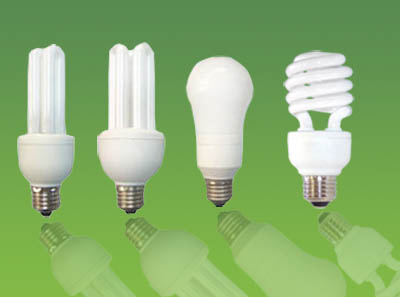
Going green: Environmentalists say Earth needs a little TLC. Here’s how YOU can help.
It all seems so daunting. Climate change, hydrogen power, even solar energy. These terms are quickly becoming the vocabulary of a new century, of a new generation – and there’s a lot to learn! News station reports are chalk full of disturbing reports about global warming, endangered animals facing extinction and the realization that they way we live will have to change if we want a clean future and a healthy Earth.
But we shouldn’t feel overwhelmed. We come into this world taking baby steps, so I believe that’s probably the way every journey should begin.
I searched the Internet and rounded up 10 of the easiest ways for you to start moving towards a greener lifestyle.
1. Make the switch to Compact Fluorescent Light bulbs (CFLs). Thanks to environmental commitments with large retailers, CFLs are readily available to us for about $2 each. That’s a more expensive purchase, but they use less power and last up to ten times longer than your average light bulb.
2. Monitor your thermostat. Make a note of where you usually keep your thermostat set at. Then only go up two degrees in the summer and down two degrees in the winter.
3. Clean or replace your air conditioning filter. The filter inside your air conditioner can get pretty grimy and a clogged system has to work harder to produce cool air which means higher power bills and the creation of greenhouse emissions.
4. Unplug idle appliances and electronic devices. Just because the iPod charger doesn’t have the iPod actually in the dock doesn’t mean that it’s not drawing energy just by being plugged in.
5. Buy a low-flow shower head with a shut-off valve. These affordable shower heads will save you both water and energy. This will help with neighborhood wastewater issues and lessen the load of a water heater.
6. Drive smarter. Save fuel by keeping your tires properly inflated. Using cruise control on the highway for up for better mileage and don’t drive aggressively. Turn off your engine rather than idling excessively. Skip the drive-through window and walk inside.
7. Get an annual tune-up for your car. At $200 to $300, a full engine tune-up sounds like a pricey way to save fuel and money, but in actuality it’s a good investment. For example, a faulty oxygen sensor can strip your car up to 3 miles per gallon. Worn spark plugs and and dirty air filters can cost you another 4 miles per gallon. This all adds up – and fast!
8. Dust off that bike. Bicycles are the most efficient form of human transportation and the only thing they burn is calories. So consider whether bike commuting might fit your lifestyle. It’s environmentally friendly.
9. Go meatless once a week. If you’re not already a vegetarian, consider cutting back on the amount of meat you consume. Livestock production absorbs 16 pounds of grain and soy feed for every pound of meat that actually gets to the plate. Each calorie of animal protein requires 78 calories of fossil fuels to produce, and irrigation directly associated with livestock production amounts to about half of the water consumed in the United States.
10. Buy local. Buy in season. The typical carrot travels 1,838 miles before it ends up in your kitchen. That’s a lot of miles and a tremendous amount of wasted fossil fuels and packaging. Buying regionally produced food is a keystone. Not only does it help with energy costs associated with shipping bulk produce, it keeps a portion of your grocery money close to where you live. So check out your local farmer’s market.
By the time you incorporate these greener steps into your lifestyle, you’ll probably start thinking of your own.




Be the first to comment